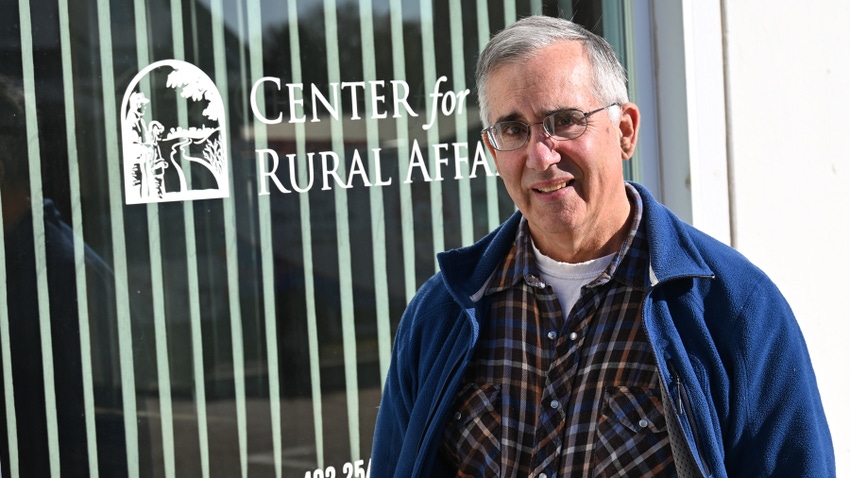
Wyatt Fraas’ first day on the job with the Center for Rural Affairs was a day to remember.
It was late 1992, and Fraas was touring northeast Nebraska — from Lincoln north to Cedar County — visiting 10 or 12 beginning farmers who were enrolled in CFRA’s Beginning Farmer Project.
“We were in two cars because I had my wife and three kids in one car. I was on the payroll before we had found a place to live yet,” Fraas recalls. “We were house hunting in the area. On that day, we visited as many of those farmers as we could, and I was supposedly figuring out where they all lived so I could make it back to those farms for visits.”
Martin Kleinschmit, now retired, was hired as staff at the Hartington CFRA office at the same time. So Fraas was getting to know his new colleague and exploring his new role with the organization.
Full circle
That was 31 years ago. Now, CFRA is celebrating five decades of being ahead of its time, working with farmers and in rural communities around the Midwest, but also supporting agriculture and rural policy development on the federal level in Washington, D.C.
Beginning and new farmers are still high on the priority list for CFRA staff. However, that list of priorities has grown and evolved over time, in many ways serving rural residents and farmers who are under the radar or underserved.
Fraas grew up in rural Ohio, but he had work experience with the U.S. Forest Service in Wyoming, managed a ranch in New Mexico and worked for a conservation district in Wisconsin before coming to CFRA. He brought those experiences with him as he focused his work with farmers.
Today, he serves as CFRA farm and community assistant director and lives just outside Coleridge, Neb., but his office is still in Hartington, Neb.
Value of networking
Going back to many successful CFRA programs, networking and establishing peer groups has been a crucial cog in success, Fraas says.
“Looking at one of our first projects, the Small Farm Energy Project, it was just farmers learning from each other,” he says. “It was a lot of trial and error. But as they were learning about alternative and small-farm energy solutions from a group, not everyone had to make the same mistakes. As they were talking about what was working and what wasn’t, everyone could see how it might work on their place, leapfrog ideas, and then get better and better at it.”
This is a model that has been repeated often in subsequent CFRA programming. Fraas also notes the importance of community development for farmers and all rural residents.
“It is the nature of our work,” he says. “Our staff is open to listening. We work with individuals and businesses, but we aren’t just telling people what to do, but asking them about problems and challenges, opportunities and what they are doing that works well. We are learning about where there are needs alongside people, and then we can work at identifying how to solve them."
Farmer sense
“Farmers, in particular, are good at solving problems,” Fraas adds. “They see something that’s not working and figure out how to make it work. So, we are learning from people in rural communities what their needs are and what solutions are out there for them to build on.”
CFRA’s small-business program has identified business and training needs in trucking, construction and child care, for instance.
“We are trying to help those who are interested in getting into these businesses, but don’t know how to make it a business,” Fraas says. “We’ve identified specific training needs, and we want to help them learn the whole process — regulations, analyzing financials and taking a business plan to a lender — to get their business up and running as quickly and successfully as possible.”
A lot has changed since that day in 1992 when Fraas was first touring the area and getting his feet wet in his new job, but the main mission and goals of CFRA remain the same, and the organization’s commitment to those goals is as passionate as ever.
Learn more about Fraas’ work and CFRA at cfra.org.
About the Author(s)
You May Also Like






